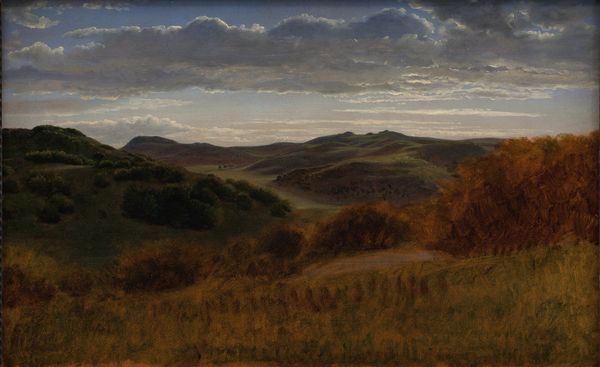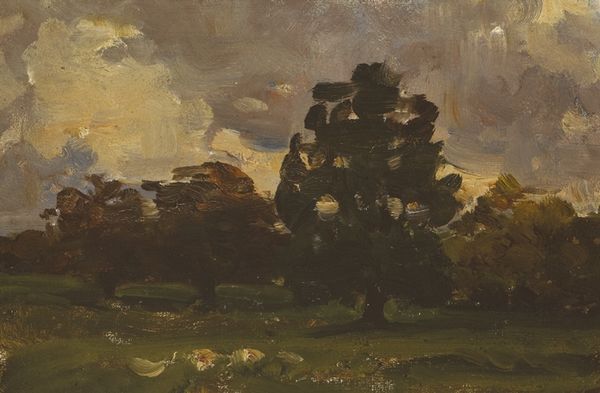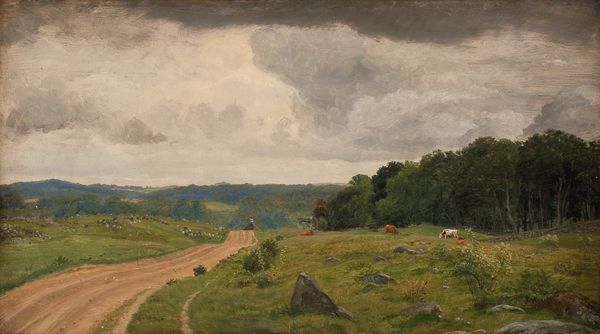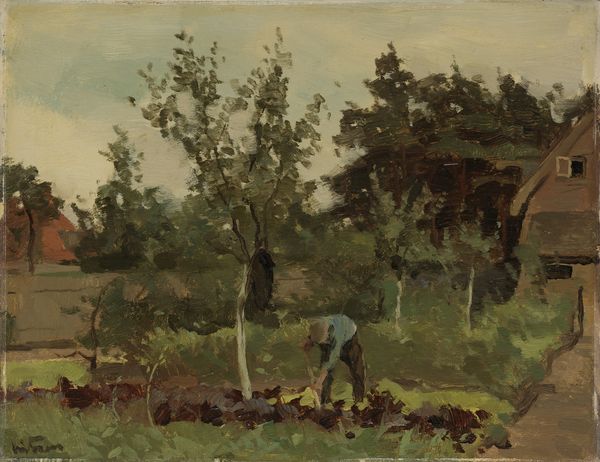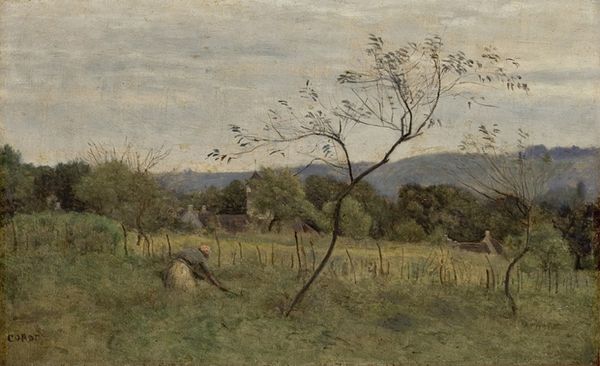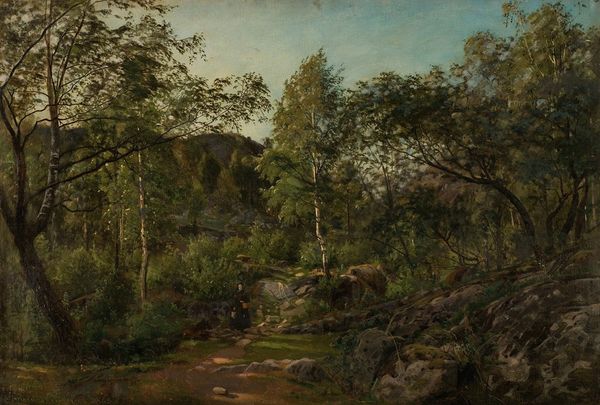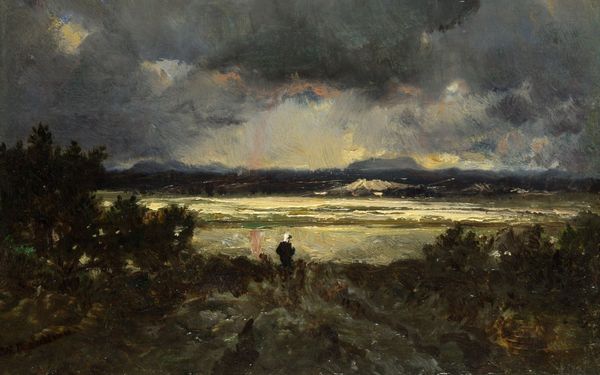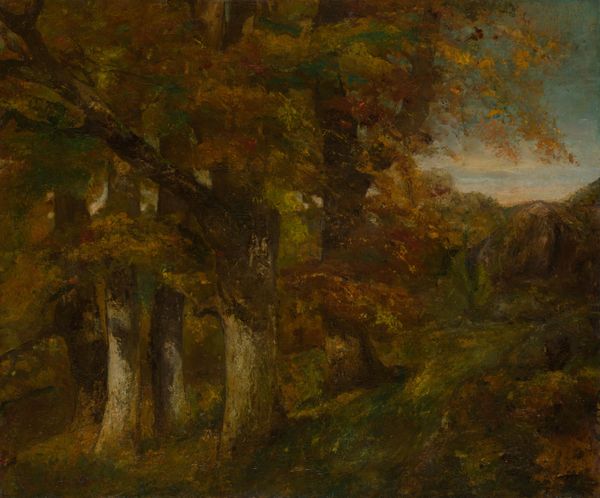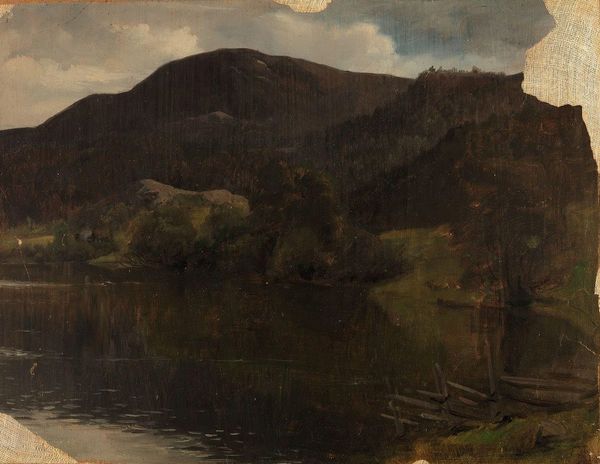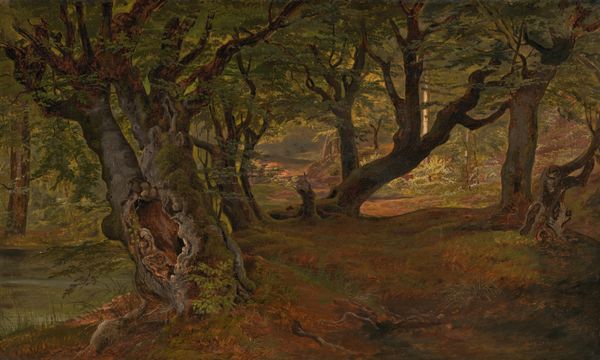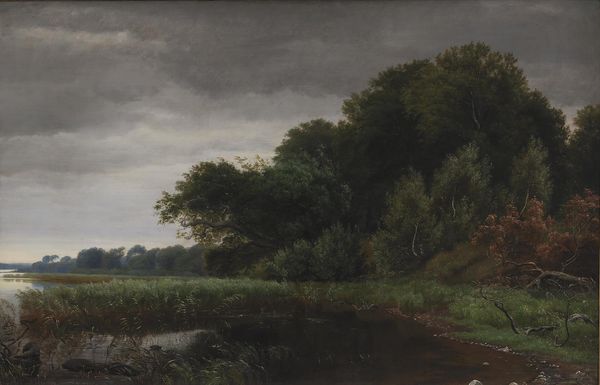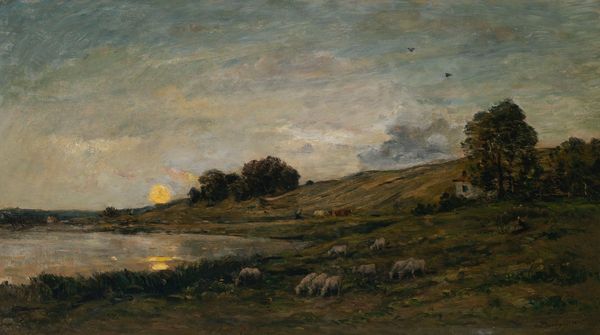
painting, oil-paint
#
painting
#
oil-paint
#
landscape
#
romanticism
Copyright: Public domain
Editor: Here we have Knud Baade’s “Landskapsstudie,” an oil painting held here at the National Gallery in Oslo. I find it so moody; the dark colors almost feel imposing. What catches your eye? Curator: Immediately, the tonal arrangement presents itself. Observe how Baade has constructed a scene almost entirely within shades of green and gray. Consider the layering – the shadowed mountain receding behind a field dotted with seemingly random textures and masses of vegetation. How might you analyze this interplay of light and dark? Editor: It’s almost monochromatic. The brushstrokes seem broad, less concerned with detail, maybe emphasizing form and shadow more than individual objects. Is that part of its visual impact? Curator: Precisely. Note how the lack of precise detail compels the viewer to engage with the composition on a purely formal level. It invites us to decode the interplay of form and value to perceive a landscape in its elemental form. Consider, also, the surface itself – the texture of the brushstrokes and impasto. How do these contribute to the overall reading of the piece? Editor: I guess it adds to the depth and sense of the raw natural world. The ruggedness of the paint mirrors the ruggedness of the scene itself. Curator: Precisely. Baade prioritizes the fundamental aspects of painting itself: texture, tonality, and form, creating a space for the viewer to explore form in painting and to connect with these elements. Editor: I hadn’t thought about it that way before, seeing the scene broken down into abstract components. I appreciate a fresh view on such classic art! Curator: Yes, recognizing these inherent properties of the work allows one to look beyond any perceived context.
Comments
No comments
Be the first to comment and join the conversation on the ultimate creative platform.
